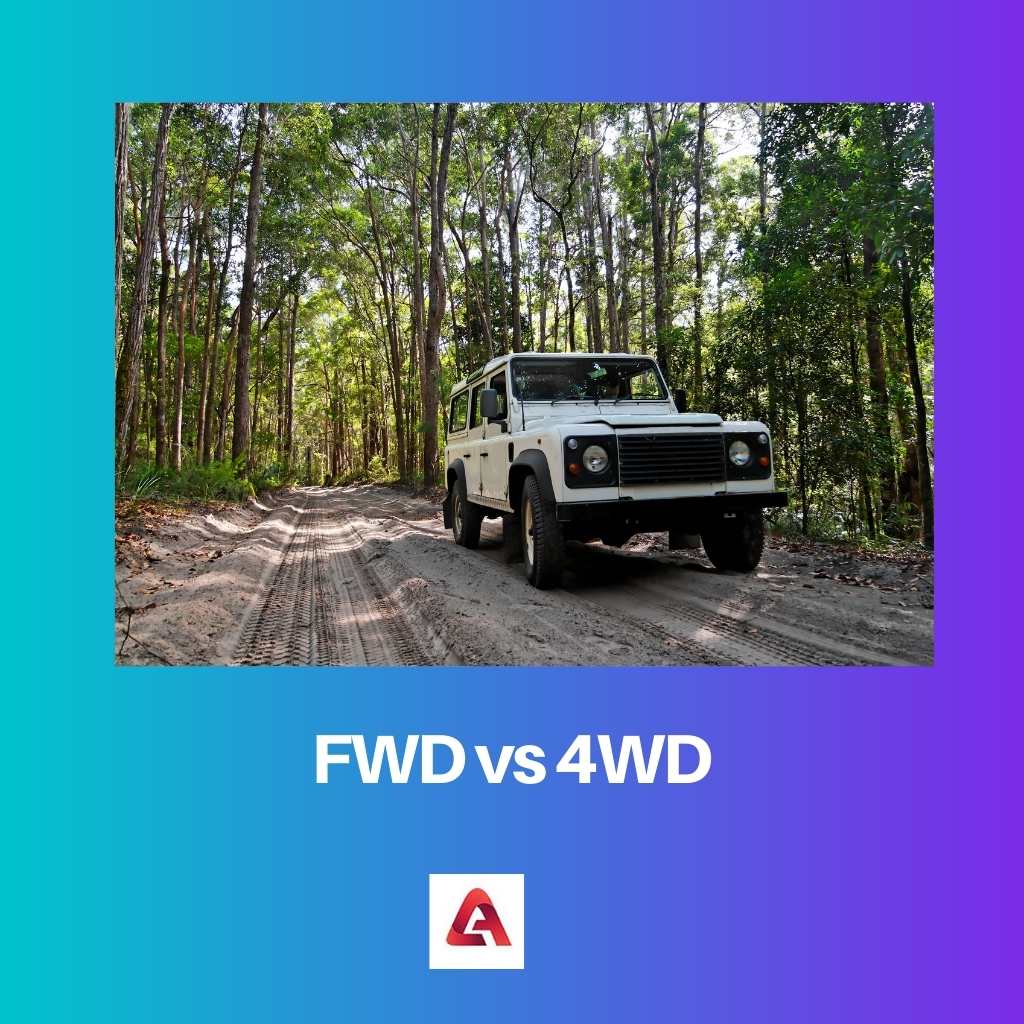Four-wheel drive (4WD) distributes power to all four wheels simultaneously, enhancing traction and stability in challenging off-road conditions and slippery surfaces like snow or mud. Front-wheel drive (FWD) allocates power to the front wheels only, offering better fuel efficiency and simpler mechanical design, but may lack the off-road capabilities and traction of 4WD in extreme conditions.
Key Takeaways
- FWD stands for front-wheel drive and is a drivetrain system in which the front wheels provide power, while 4WD stands for four-wheel drive and is a system in which power is delivered to all four wheels.
- FWD vehicles are lighter, more fuel-efficient, and less expensive than 4WD vehicles, while 4WD vehicles offer the better off-road capability and traction in slippery conditions.
- FWD vehicles are commonly found in passenger cars, while 4WD is more commonly in trucks and SUVs.
FWD vs 4WD
FWD (Front-Wheel Drive) is a drivetrain that transfers power to the vehicle’s front wheels for controlling steering and driving a car. It is fuel efficient. 4WD (Four-wheel drive) is a drivetrain that transfers power to all four vehicle wheels. It is less fuel efficient.

This translates to the 4WD being imbued with an enhanced power capacity that is handy while travelling undulating terrains. A vehicle empowered by FWD may not be well-suited for such challenging terrains.
Comparison Table
| Feature | FWD (Front-Wheel Drive) | 4WD (Four-Wheel Drive) |
|---|---|---|
| Drives wheels | Front wheels only | All four wheels |
| Engagement | Always engaged | Driver-selectable (with high and low range options) |
| Off-road capability | Limited | Excellent |
| Fuel efficiency | Generally better | Generally worse |
| Handling | Generally considered more predictable and stable | Can be more challenging in difficult terrain |
| Cost | Typically cheaper | Typically more expensive |
| Common applications | Everyday driving, city commuting, fuel-efficient vehicles | Off-road driving, towing, driving in harsh weather conditions |
What is FWD?
Front-wheel drive (FWD) is a drivetrain configuration where the engine’s power is primarily transmitted to the front wheels of a vehicle. This setup contrasts with rear-wheel drive (RWD), where power is sent to the rear wheels, and all-wheel drive (AWD) or four-wheel drive (4WD), where power is distributed to all four wheels.
Mechanism
In FWD vehicles, the engine, transmission, and differential are housed in the front of the vehicle. The transmission transfers power from the engine to the front wheels through half-shafts or drive shafts. This configuration allows for a simpler and more compact drivetrain layout compared to RWD or AWD systems.
Advantages of FWD
- Better Traction in Normal Conditions: FWD vehicles tend to have better traction in normal driving conditions, especially during acceleration, as the weight of the engine sits over the front wheels, providing greater downward force.
- Improved Fuel Efficiency: FWD systems are lighter and simpler than AWD or 4WD systems, contributing to improved fuel efficiency and lower manufacturing costs.
- Enhanced Interior Space: By eliminating the need for a driveshaft running to the rear wheels, FWD vehicles have more interior space, offering increased legroom and cargo capacity.
Limitations of FWD
- Limited Performance in Extreme Conditions: While FWD provides adequate traction in most situations, it may struggle in extreme weather conditions such as deep snow or off-road terrain where all-wheel or four-wheel drive systems excel.
- Potential Understeer: FWD vehicles are more prone to understeer, where the vehicle tends to plow straight ahead in turns, due to the weight distribution and power delivery characteristics.
- Complex Repairs: Though simpler than AWD or RWD systems, FWD drivetrains can be more complex to repair or replace components due to the compact and integrated nature of their design.

What is 4WD?
Four-wheel drive (4WD) is a drivetrain configuration that distributes power from the engine to all four wheels of a vehicle simultaneously. It is designed to provide increased traction and control, particularly in off-road conditions and challenging terrain.
Mechanism
4WD systems consist of a transfer case, which distributes power from the transmission to both the front and rear axles. This allows for equal torque to be applied to all four wheels, enhancing traction and stability. Some 4WD systems may offer selectable modes, allowing drivers to switch between 2WD (two-wheel drive) and 4WD depending on road conditions.
Advantages of 4WD
- Enhanced Off-Road Capability: 4WD vehicles excel in off-road situations, such as mud, sand, gravel, and steep inclines, where traction is essential. The ability to distribute power to all four wheels simultaneously helps navigate challenging terrain more effectively.
- Improved Traction: By powering all four wheels, 4WD systems provide better traction in slippery conditions, such as snow, ice, or wet roads. This can enhance stability and control, especially during acceleration and braking.
- Versatility: Many modern 4WD systems offer selectable modes, allowing drivers to switch between 2WD and 4WD as needed. This versatility allows for better fuel efficiency during normal driving conditions while still providing the benefits of 4WD when necessary.
Limitations of 4WD
- Decreased Fuel Efficiency: 4WD systems add weight and complexity to a vehicle, which can result in reduced fuel efficiency compared to two-wheel drive counterparts. However, advancements in technology have mitigated this drawback to some extent.
- Higher Cost: Vehicles equipped with 4WD tend to be more expensive due to the additional components required for the drivetrain system. Maintenance and repair costs may also be higher compared to simpler drivetrain configurations.
- Limited Maneuverability: While 4WD enhances traction and control in challenging terrain, it may also reduce maneuverability, especially on paved roads. The added weight and complexity of the system can affect handling and agility, particularly in tight spaces.

Main Differences Between FWD and 4WD
- Power Distribution
- FWD: Power primarily to front wheels.
- 4WD: Power distributed to all four wheels.
- Terrain Adaptability
- FWD: Better suited for normal road conditions.
- 4WD: Superior traction in off-road and slippery conditions.
- Vehicle Types
- FWD: Common in passenger cars, small SUVs.
- 4WD: Found in trucks, SUVs, some high-performance vehicles.
- Driving Characteristics
- FWD: Typically provides better fuel efficiency.
- 4WD: Offers versatile driving capabilities including off-road terrain and towing.
- Complexity and Weight
- FWD: Less complex, lighter.
- 4WD: More complex, heavier, potential impact on fuel efficiency and handling.





